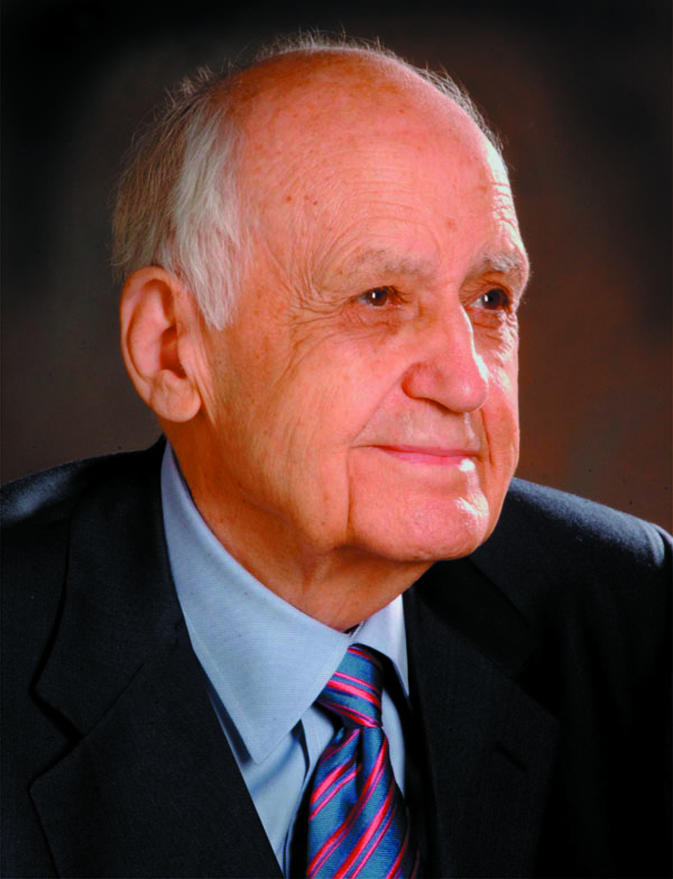Short abstract
Microbe hunter, pioneering virologist, and the 20th century's leading vaccinologist
Maurice Hilleman was responsible for developing more than 40 vaccines, including measles, mumps, hepatitis A, hepatitis B, meningitis, pneumonia, Haemophilus influenzae bacteria, and rubella. His vaccines have been credited with saving millions of lives and with eradicating common childhood diseases. The measles vaccine alone has prevented approximately one million deaths. Among other accomplishments, he succeeded in characterising and isolating many viruses, including the hepatitis A vaccine in culture.
Despite Hilleman's many breakthroughs in immunology and vaccinology, he has never been a household name. Anthony Fauci, director of the US National Institute of Allergy and Infectious Diseases, said Hilleman had “little use for self credit.” Dr Fauci told the BMJ that Hilleman's contributions were “the best kept secret among the lay public. If you look at the whole field of vaccinology, nobody was more influential.”
Hilleman's interest in microbiology and science had its roots in his childhood. Born in 1919, he grew up during the Great Depression on a farm in the southeastern plains of Montana. To help his family through the Depression, he needed to be economical and tenacious. It was a building block he later used for keeping his focus.
After the Depression, he entered Montana State University on a full scholarship. In a 1999 issue of Immunological Reviews, he described Montana State as a “no-nonsense institution where professors taught and where teaching assistants, other than laboratory aides, did not exist.” He gained a bachelor's degree in microbiology and chemistry.
Figure 1.

His graduate education at the University of Chicago reinforced his independence and self reliance. It was a tough environment, in which Hilleman said you would either “sink or swim.” In 1944 he was awarded a PhD in microbiology and chemistry. Hilleman told his professors at Chicago that he was going into industry, where he thought he would be best positioned not only for conducting research, but also for ensuring and expediting clinical applications. His professors told him that he belonged in academia and that they had not trained him for a career in industry. Hilleman strongly disagreed, maintaining that academic institutions lacked the resources to move scientific innovations forward and to market.
Paul Offit, chief of infectious diseases at the Children's Hospital of Philadelphia, told the BMJ, “His commitment was to make something useful and convert it to clinical use. Maurice's genius was in developing vaccines, reliably reproducing them, and he was in charge of all pharmaceutical facets from research to the marketplace.” Hilleman felt that scientists had a responsibility to provide a return on knowledge gained in the laboratory.
In 1944 he joined the virus laboratories of E R Squibb & Sons in New Brunswick, New Jersey, where he developed a vaccine against Japanese B encephalitis, urgently needed to immunise troops fighting in the Pacific.
Hilleman characterised several viruses and identified changes that could result when a virus mutated. This concept, which he worked out while at the Walter Reed Institute of Army Research, helped prevent a huge pandemic of Hong Kong flu in 1957. Learning that the flu was a new strain, 40 million doses of vaccine were rapidly made available in the United States.
He joined Merck on New Year's Eve, 1957, as director of a new department of virus and cell biology research. Under Hilleman's aegis, by 1984 Merck had garnered 37 product licences, with an additional three vaccines ready for development. He retired from Merck at age 65, but stayed on as a consultant.
Hilleman's style of working was icono-clastic. Dr Offit said, “To give you an example of how he worked, in 1963, [when his daughter had the classic symptoms of the mumps,] he swabbed the back of his daughter's throat, brought it to the lab to culture, and by 1967, there was a vaccine.” He added, “Today's regulation would preclude that from happening... If Maurice was alive today, I doubt he would be able to be Maurice. He was a very strong willed person and a person like him could face a high level of inertia.”
During his more than 60 years in basic and applied research, he earned a reputation as an often harsh, impatient fellow who tangled with industry and government bureaucracies. Hilleman defended his pushy and prickly behaviour, which offended some colleagues and coworkers, as crucial for science to advance. He argued that politics, not science, determined which breakthroughs were brought to the marketplace.
Hilleman received many honours, including a special lifetime achievement award from the World Health Organization.
He leaves his second wife, Lorraine; two daughters; and five grandchildren.
Maurice Hilleman, microbiologist Philadelphia, United States (b Miles City, Montana, 1919), died from cancer on 11 April 2005.


